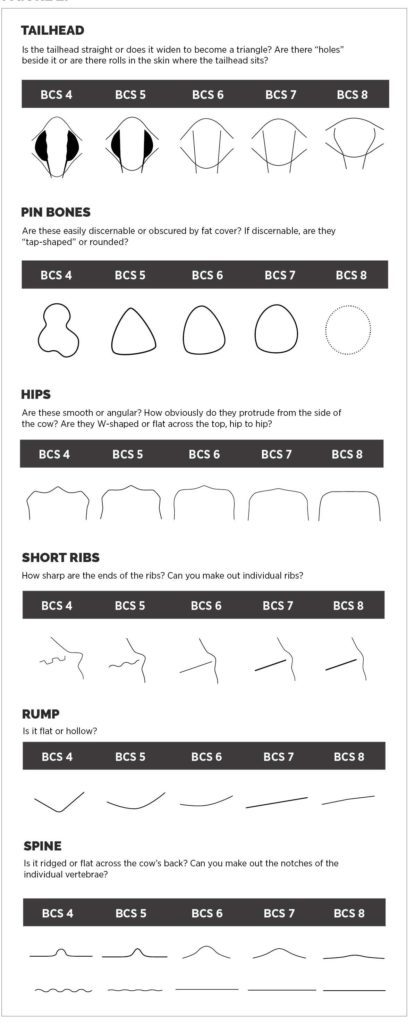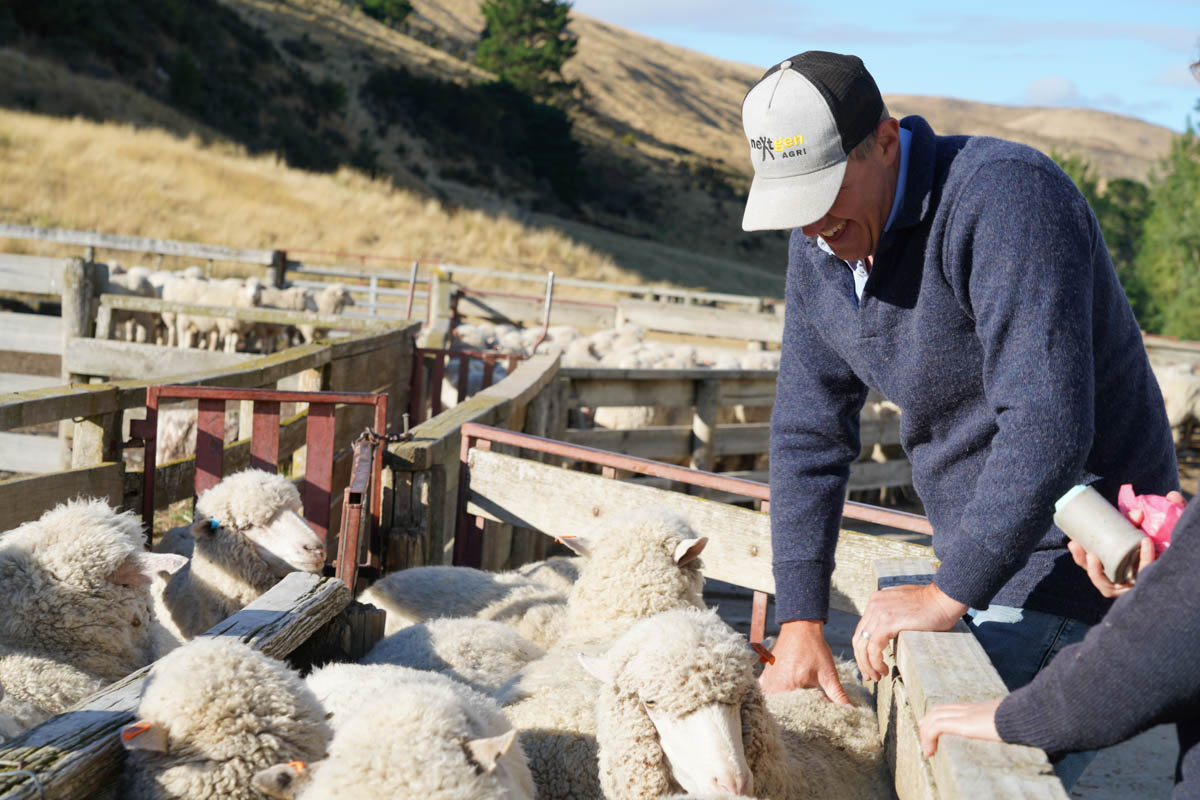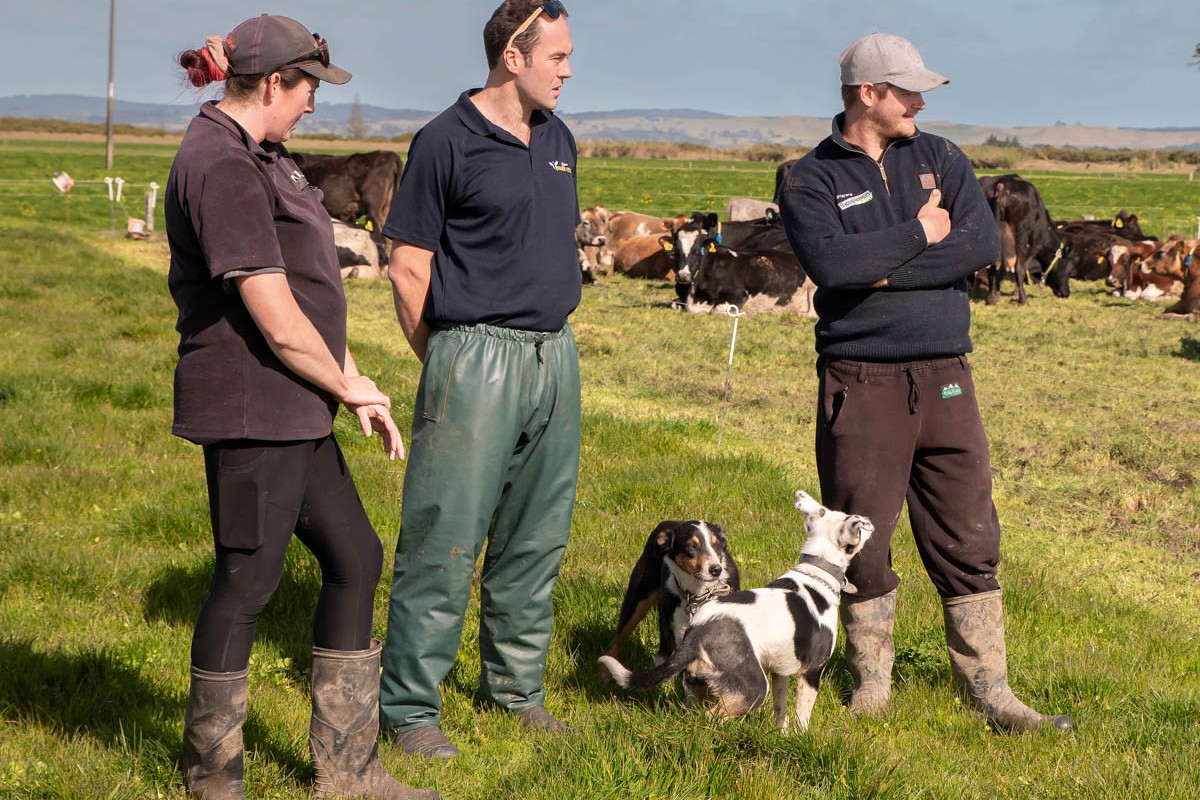Rebecca Smith
The original briefing for this article was to write about “building flexibility for threats and opportunities”. At that time I assumed the “threats” Terry was referring to were the droughts, flooding and the market uncertainty we were facing with Covid-19 impacts on the supply chain in China.
Little did we know that only a few weeks later we would be in a nationwide level 4 lockdown and the impacts of Covid-19 would be a lot closer to home. However, this has highlighted the importance of the brief; now more than ever with processing capacity down, ability to sell livestock reduced and feed shortages due to drought or flooding impacts, we need to look at buffers in the system to “weather the storms” in front of us.
The body fat of a beef cow from weaning to calving is the perfect buffer and body condition scoring is the tool we use to measure and monitor an adult cow’s body fat cover. We can use this information to manage split mobs, manage mob feed requirements and strategically lose body fat cover over the “expensive” feed period of winter to achieve set targets prior to calving. We use body condition scoring and not liveweights as this removes the effect of cow frame size differences and stage of pregnancy.
HOW DO WE BODY CONDITION SCORE CATTLE?
Ideally cattle should be body condition scored in the yards with your hands on individual animals. Luckily autumn is a good time to do this, when they are in for weaning, TB testing or pregnancy testing as this is a key time for body condition scoring. Up a race is ideal and the easiest for marking/drafting but once you get a bit of experience it is possible (due to the short hair coat of cattle) to condition score them moving freely in uncrowded pens, or even out in the paddock or slowly moving through gateways.
The areas we focus on for body condition scoring are the: pin bones, tailhead, rump, hips, shortribs and spine.
The images in Figure 1 show what shapes we see and feel at different body condition scores. Place your hands on each of the different body parts to get an appreciation for the shape you are seeing and then refer to images in Figure 2.
THE PROBLEM WITH EXTREMES:
Cows that are too fat (BCS 8-9) have just as much of a negative impact on farm productivity as cows that are too thin (BCS 1-4). Getting cows in calf is the first step to determining the reproductive performance of a herd, and both extremes on the BCS scale have been shown to impact a cow’s ability to cycle and her ability to conceive.
Thin cows are also likely to have a longer calving-to-conception interval and if they do get in calf their calves are likely to have less vigour, or “get up and go” when they’re born.
Fat cows come with a unique set of complications, they have an increased risk of dystocia (especially over-conditioned two-year-olds) due to increased intrapelvic fat, they are costly to maintain in that condition and they have impaired mobility.
THE BUFFER:
Cows that have been on good summer country may be a condition score 7-8 when they come in for weaning, and our pre-calving targets for beef cows are for them to be a condition score 5. This means cows can afford to lose 2 body condition scores over autumn-winter which frees up feed/supplement for other classes of stock.
RUNNING A SPLIT-HERD SYSTEM:
There will likely be a spectrum of individual animals at different body condition scores in your cow herd and some may need increased feeding to achieve the target body condition score 5, whereas others, as discussed above, can afford to lose condition to free up feed for others. They certainly won’t do this on their own in one mob, so in this situation it may be necessary to draft out those BCS 5 and below and work out a feed budget to feed these to achieve target by calving. The earlier you can do this the better as it is harder to increase body condition score in late pregnancy.
The cattle with body condition score over 7 can be offered reduced feed levels, or lower quality feed so that they use some of the body fat off their backs and reach calving targets of BCS 5.
By mobilising two body condition scores, a 560kg cow in BCS 7 at weaning requires 19% less energy over the 100 days post-weaning, than a cow that remains in BCS 7. If being fed supplementary feed this is equivalent to 12 bales of hay over the winter period (assuming 9 MJ ME/kg DM and 16kg DM bales). If the feed conserved is pasture, then this provides enough late winter feed to maintain 800 ewes at BCS 3 rather than have them drop to BCS 2.5. (Sheep are body condition scored on a 1-5 scale compared with cattle at a 1-10 scale, with a ewe’s target being BCS 3).
This ability to measure, manage and monitor body condition score is an element of your business that you can control. As farmers, and people, it is more important than ever to take advantage of the opportunities we have to exert some control as we navigate a business environment where we are continuously faced with uncertainty; climatic, political, procurement, economic or otherwise. These small measures of control can have big impacts and are the difference between the making or the breaking in tough times. So take the opportunity, use the buffer and get condition scoring!
I would like to acknowledge Beef + Lamb NZ for the examples and images used in this article, I would also recommend if you are interested in learning more about body condition scoring beef cattle you refer to the Beef Cow Body Condition Scoring resource https://beeflambnz.com/knowledge-hub/PDF/beef-cow-body-condition-scoring produced by Beef + Lamb NZ in conjunction with Landcorp, Massey University & AgFirst.




